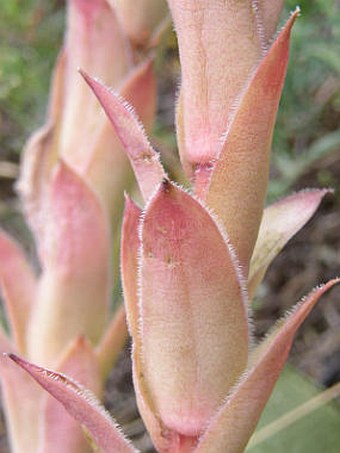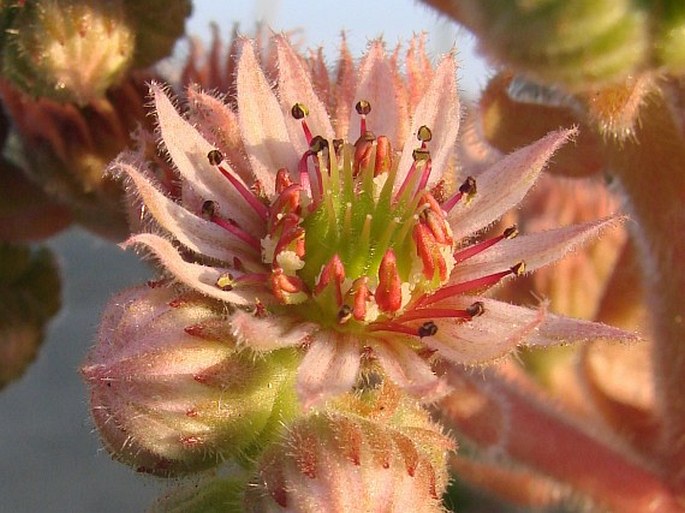Syn.: Sempervivum glaucum Ten., Sempervivum schottii Baker, non C. B. Lehm. et Schnittsp., Sempervivum andreanum Wale, Sempervivum arvernense Lecoq et Lamotte, Sempervivum alpinum Griseb. et Schenk
Family: Crassulaceae J. St.-Hil.

Distribution: Mountains of Western, Central and Southern Europe, from Pyrenees to Alps, Apennines and Dinarides. It has been also introduced to many others parts of Europe and to North America.
Ecology: It grows on sunny rocks and stony slopes, also on walls and roofs, from foothills to alpine altitudinal zone. Flowers from June to July.
Description: A succulent, monocarpic herb with a basal rosette of fleshy leaves. From the centre of the rosette grows a hairy stem, up to 20(–50) cm high, with a terminal inflorescence (cymes of 5–15 pink or purple flowers with 12–16 pointed petals). The fruit is a follicle. The rosette dies after flowering but the plant spreads by means of stolons. It is a very variable species with a number of distinct subspecies.
Threat and protection: The Common Houseleek is a protected plant species in Hungary.
Note: In the Middle Ages the plant was grown on roofs as a protection against fire and lightning. It was also used as a herbal remedy. The Common Houseleek (also known as Old-Man-and-Woman or Hen-and-Chickens) is often grown in rock gardens as an ornamental plant.




These images were taken in Czechia, Southern Moravia, Brno-Bystrc (July 27, 2005).


